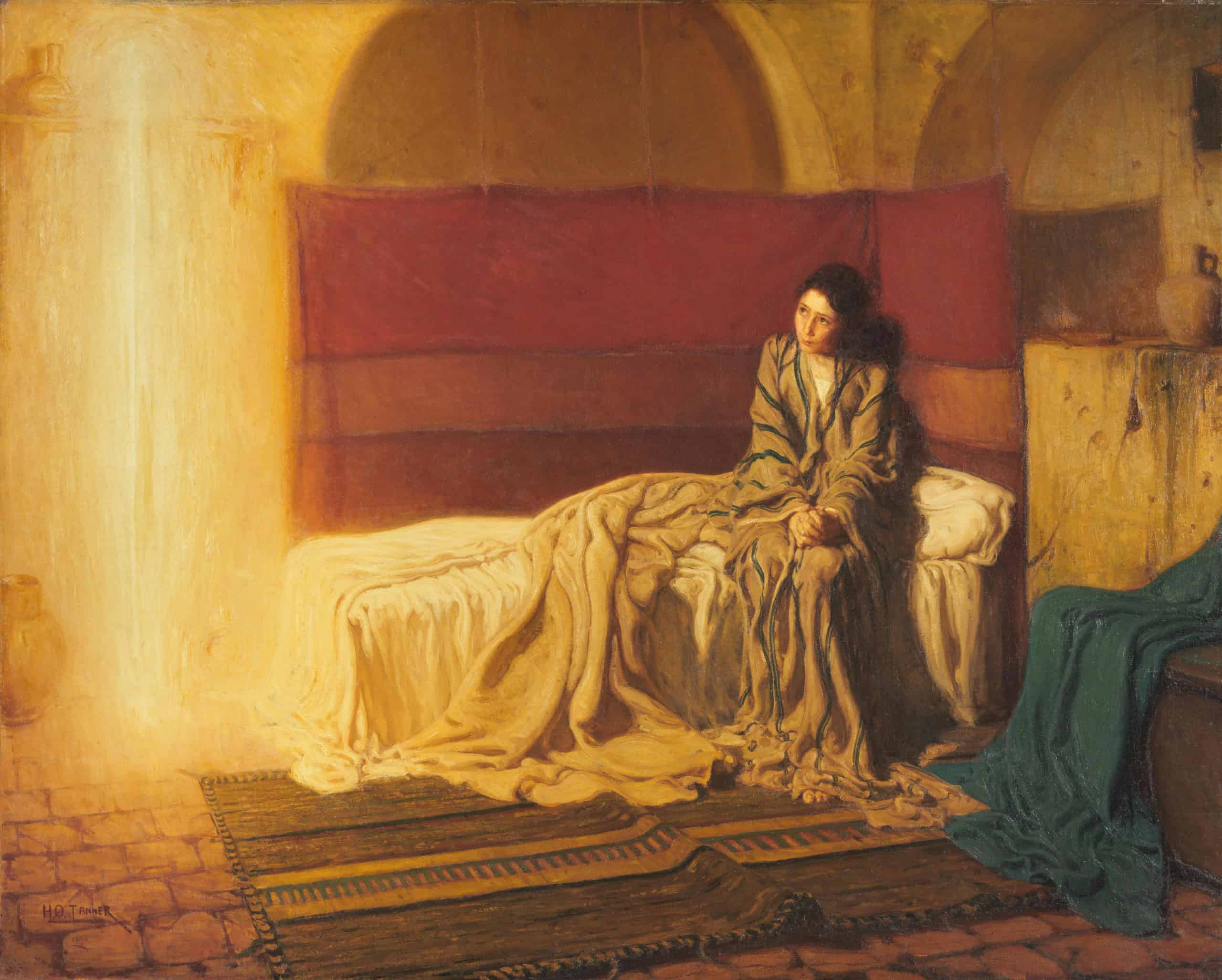The following reflection is part of our “Jesuit 101” series. This piece helps us to dive deeper into the Contemplation on the Incarnation from the Spiritual Exercises. To learn more about this contemplation, check out our explainer article: “Jesuit 101: The Contemplation on the Incarnation: Why and How Jesus Shows Up”
As my prayer became more attentive and inward, I had less and less to say.
I finally became completely silent.
I started to listen
I first thought that praying entailed speaking.
I then learnt that praying is hearing, not merely being silent.
This is how it is.
To pray does not mean to listen to oneself speaking.
Prayer involves becoming silent,
and being silent,
and waiting until God is heard.
– Søren Kierkegaard
In January of 2019, I was studying at Loyola University Chicago while applying to become a Jesuit. As part of my discernment, I was invited to attend an eight-day silent retreat at the Jesuit Novitiate in St. Paul, Minnesota.
Having never made a silent retreat, I was nervous. There was something intimidating about the impending silence. There was the question of how I would spend my time outside of prayer, meditation, and Mass. And if I was being honest with myself, I think I was also nervous about how this retreat would influence my discernment.
Would God continue to affirm this desire for religious life? Would He ask me to reconsider? Would I even be able to hear Him clearly?
With all this on my mind and heart, I packed my bag with an unnecessary number of books to read and tried to mentally prepare for the great spiritual mysteries that were to be revealed to me on this retreat.
Thankfully the vocations team, in their wisdom and humor, helped correct my misunderstanding of what was to take place during this retreat.
“Remember: the silence is a tool, not a rule. If you need toilet paper, just ask for it for God’s sake.”
The restlessness and anxiety I felt about the silence slowly began to melt away. I began to see silence as not merely a penance or simple piety we impose upon ourselves. Rather, it is a disposition, an opportunity to encounter the God we desire to know in a more intentional and intimate way.
I came to understand that the only mistake I could make in my retreat would be to not take full advantage of the opportunity that lay in the silence. I could either remain in the restlessness of my own thoughts and concerns or instead enter into the peaceful, restful silence. Where God was waiting to speak to me.
We don’t enter into silence to uncover every spiritual mystery and insight under the Sun, to become some sort of guru or master. Instead, we allow ourselves to fall silent before our God and better allow Him to reveal that which He desires to show us.
—
In the Second Week of the Spiritual Exercises, we seek the following grace: “Lord, grant that I may see thee more clearly, love thee more dearly, and follow thee more nearly.” Taking the Gospel, we then meditate on various moments in the life of Christ and his ministry.
St. Ignatius instructs us to do this by imagining these moments, applying all our senses to them, and repeating this process by reentering these contemplations. The desired grace remains the same: to draw close to Jesus and to know him more intimately.
On my Long Retreat, I had a particularly potent experience meditating on the Annunciation. It was a passage in the Gospel I was familiar with and had even prayed upon several times before the Exercises. Those previous times, I found it beautiful and moving, but revisiting it during the thirty days of silence bore a different fruit.
After reading the passage several times, I closed my eyes and began to imagine the scene. I could see Mary laying alone in her bed, the room dark and silent from the night. As the Archangel Gabriel appeared, Mary retreated slightly into the corner of her bed; I was particularly aware of just how young she was.
Gabriel spoke to Mary with profound gentleness, comforting her in her troubledness. Mary spoke her words of acceptance with a mix of peace and astonishment, and Gabriel departed. The lines of the Gospel end here, yet this is where the real grace of my prayer began to take shape.
I was left with the image of Our Lady alone in her bed after Gabriel’s departure. I watched as she sat up, fixing her hair, calming her breath, and gathering herself. After some time, Mary opened her eyes as a smile crept on her face, looking down and placing her hands over her stomach. She began to gently trace her fingers over her womb, her womb where Christ was forming.
In one of his annotations on this meditation, St. Ignatius instructs that we consider what we might feel moved to say to Mary our Mother in this moment “according to what I feel in me, in order more to follow and imitate our Lord, so lately incarnate” (Sp. Ex. 109).
Holding this image of Mary with these words from St. Ignatius, I simply said to Mary “I want to be closer to your son.” I was now in front of Mary as she smiled at me, taking my hand, and placing it over her stomach, then laying her own hands over mine.
I had often considered the beauty, the strength, and the power present in the Annunciation. I had been fascinated by how the salvation of the world seemed to hang in this moment. Never had I been invited so intimately into this consideration.
In the silence following the Annunciation and in the silence of my meditation, God revealed Himself to me in perhaps the most beautiful and profound way I had ever encountered. As I sat with Mary, with her hands gently keeping my own so close to Jesus, I was overwhelmed.
I felt increasingly aware that this was not of my own doing. This was prayer in its purest form: undeniable, intimate peace in the presence of the One who created me. I couldn’t help but weep.
—
Christmas is a time of great beauty, excitement, and joy but it can also be a time that is loud and busy too.
How might you find time in the coming weeks to sit with Mary in this season, to rest in the joyful anticipation for the coming of her son as she invites you to feel him kick?
-//-
Header image courtesy of the Philadelphia Museum of Art.


